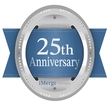What Employer Branding Strategies Can We Implement to Attract Top Talent in Our Competitive Market?
In today’s hyper-competitive SaaS landscape, where capital is mobile and talent is scarce, your employer brand is no longer a “nice to have”—it’s a strategic asset. According to a 2023 McKinsey report, 70% of tech professionals say a company’s reputation as an employer significantly influences their decision to apply. And in a market where the average tenure of a software engineer is under two years, attracting top talent is only half the battle—retaining them is the other.
So, what can a SaaS CEO do to stand out in a crowded field? Drawing on research from elite MBA programs like Harvard and Wharton, insights from SaaS leaders like Jason Lemkin and David Skok, and data from sources like SaaS Capital and PitchBook, this article outlines actionable, evidence-based employer branding strategies that drive real business value.
1. Define and Operationalize Your Employer Value Proposition (EVP)
Harvard Business School’s case studies on scaling SaaS companies emphasize the importance of a clearly articulated EVP—what your company uniquely offers employees in exchange for their skills and experience. But defining it isn’t enough. You must operationalize it across every touchpoint, from job descriptions to onboarding to performance reviews.
- Action: Conduct internal surveys and exit interviews to identify what current and former employees value most. Use this data to shape your EVP.
- Metric to Track: EVP resonance score (via candidate and employee surveys).
Companies like HubSpot and Atlassian have built strong employer brands by aligning their EVP with their internal culture and external messaging. This alignment reduces hiring friction and improves retention—two key drivers of SaaS valuation multiples.
2. Showcase Innovation as a Cultural Norm
Top-tier talent wants to work where innovation isn’t just a buzzword—it’s a behavior. Stanford’s research on innovation KPIs suggests tracking metrics like “percentage of employee-initiated product features” or “time from idea to prototype” to quantify innovation culture.
- Action: Publicly share innovation metrics and stories—on your careers page, in interviews, and on LinkedIn.
- Metric to Track: Internal innovation participation rate (e.g., hackathon involvement, idea submissions).
Companies that embed innovation into their brand narrative not only attract product-minded engineers and designers but also signal to investors that they’re building long-term defensibility—critical for M&A readiness.
3. Leverage Employee Advocacy and Social Proof
According to LinkedIn’s Talent Solutions report, candidates trust employees 3x more than the company to provide credible information about what it’s like to work there. That’s why employee advocacy is one of the most underutilized levers in employer branding.
- Action: Launch an employee ambassador program. Encourage team members to share their experiences on social media, Glassdoor, and in blog posts.
- Metric to Track: Employee-generated content engagement rate.
Companies like Drift and Notion have successfully used this strategy to build grassroots credibility, which in turn lowers cost-per-hire and improves offer acceptance rates—both of which impact your customer acquisition cost (CAC) indirectly by reducing hiring delays in go-to-market teams.
4. Align Compensation and Benefits with Market Expectations
Compensation is table stakes, but strategic benefits can differentiate your brand. Wharton’s research on talent retention in tech firms highlights the growing importance of flexibility, mental health support, and equity transparency.
- Action: Benchmark your compensation and benefits against top quartile SaaS firms using data from sources like Carta and Radford.
- Metric to Track: Offer-to-acceptance ratio and compensation satisfaction score.
Also consider how your equity structure is perceived. In M&A scenarios, clarity around vesting schedules and liquidity events can be a major retention lever. As explored in How Do I Handle Earn-Outs in the Sale of My Software Business?, aligning incentives pre- and post-acquisition is critical to maintaining team continuity.
5. Build a Scalable Culture of Learning and Leadership
Top talent doesn’t just want a job—they want a trajectory. According to a Stanford GSB study, companies that invest in leadership development see 1.5x higher employee retention and 2x faster internal promotions.
- Action: Implement structured mentorship, career pathing, and access to external learning platforms (e.g., Reforge, Coursera).
- Metric to Track: Internal promotion rate and learning participation rate.
These programs not only improve engagement but also reduce reliance on external hires for leadership roles—an important consideration when preparing for a liquidity event or acquisition. As noted in Exit Business Planning Strategy, leadership continuity is a key diligence item for acquirers.
6. Use Data to Continuously Refine Your Employer Brand
Employer branding is not a one-and-done initiative—it’s a living system. SaaS leaders should treat it like any other growth function: test, measure, iterate.
- Action: Build a dashboard that tracks key employer brand KPIs: application conversion rate, Glassdoor rating trends, employee NPS, and time-to-fill for critical roles.
- Metric to Track: Employer Brand Health Index (a composite score of the above).
Companies that integrate employer branding into their strategic planning process—alongside financial forecasting and product roadmapping—are better positioned to scale sustainably and attract acquisition interest. Advisors like iMerge often use these metrics to assess cultural fit and team strength during due diligence.
Conclusion: Employer Branding as a Strategic Growth Lever
In a market where capital is abundant but talent is not, your employer brand is one of the few levers you fully control. By aligning your EVP with your culture, showcasing innovation, empowering employee advocacy, and investing in leadership development, you not only attract top talent—you build a company that top talent wants to stay with.
And when it comes time to raise capital, pursue an acquisition, or plan an exit, a strong employer brand becomes a multiplier—not just of talent, but of valuation.
Scaling fast or planning an exit? iMerge’s SaaS expertise can guide your next move—reach out today.



